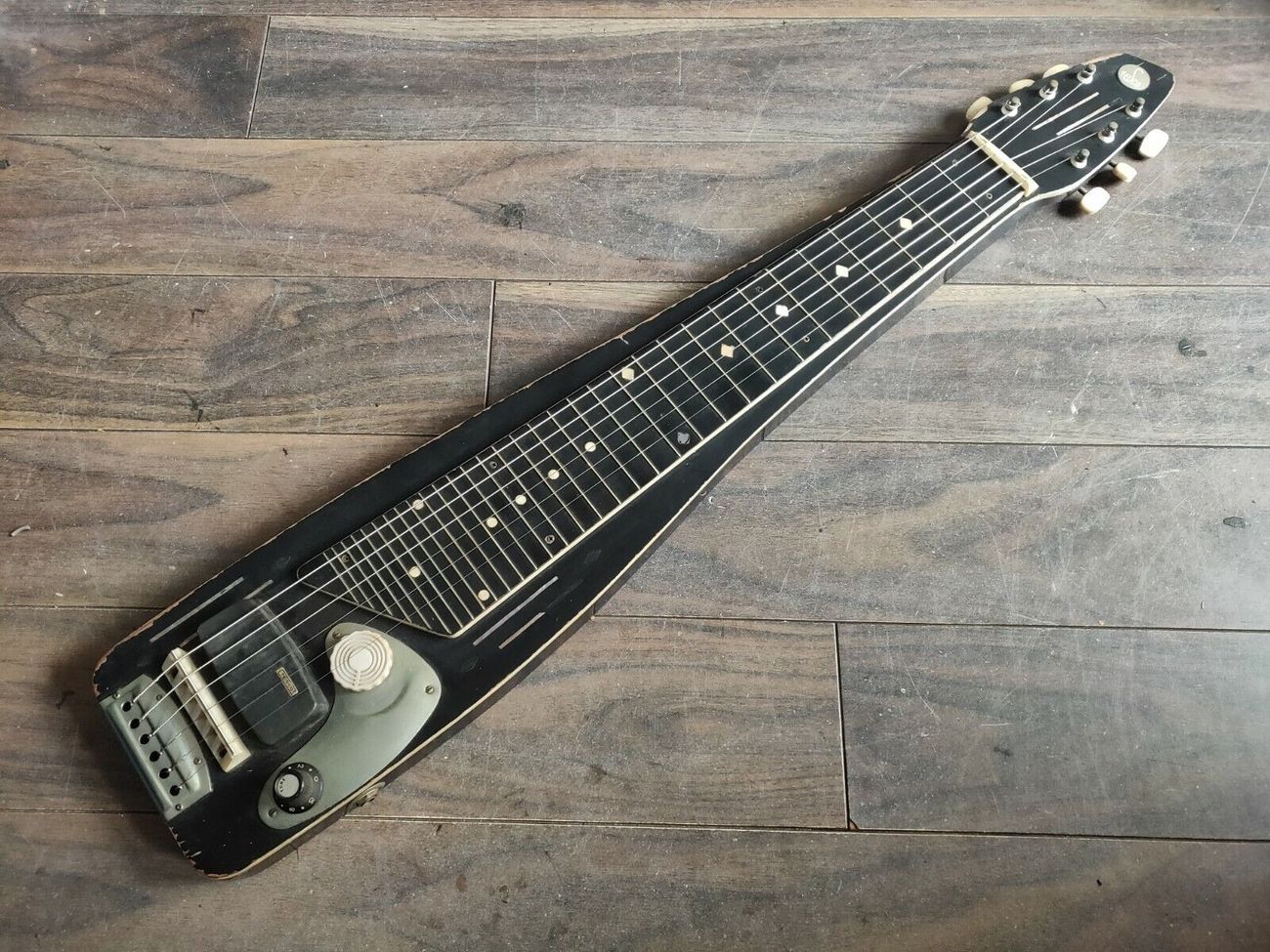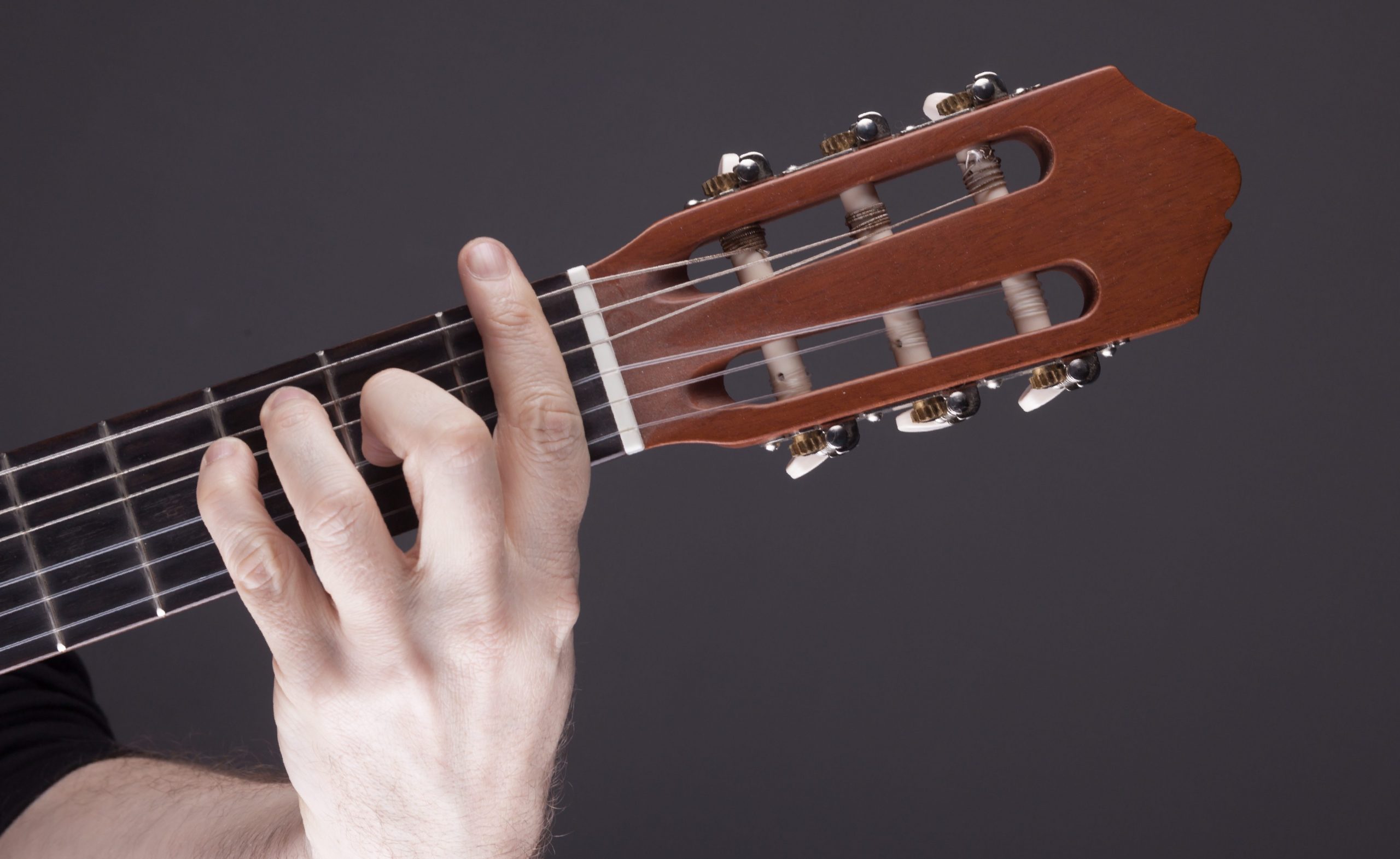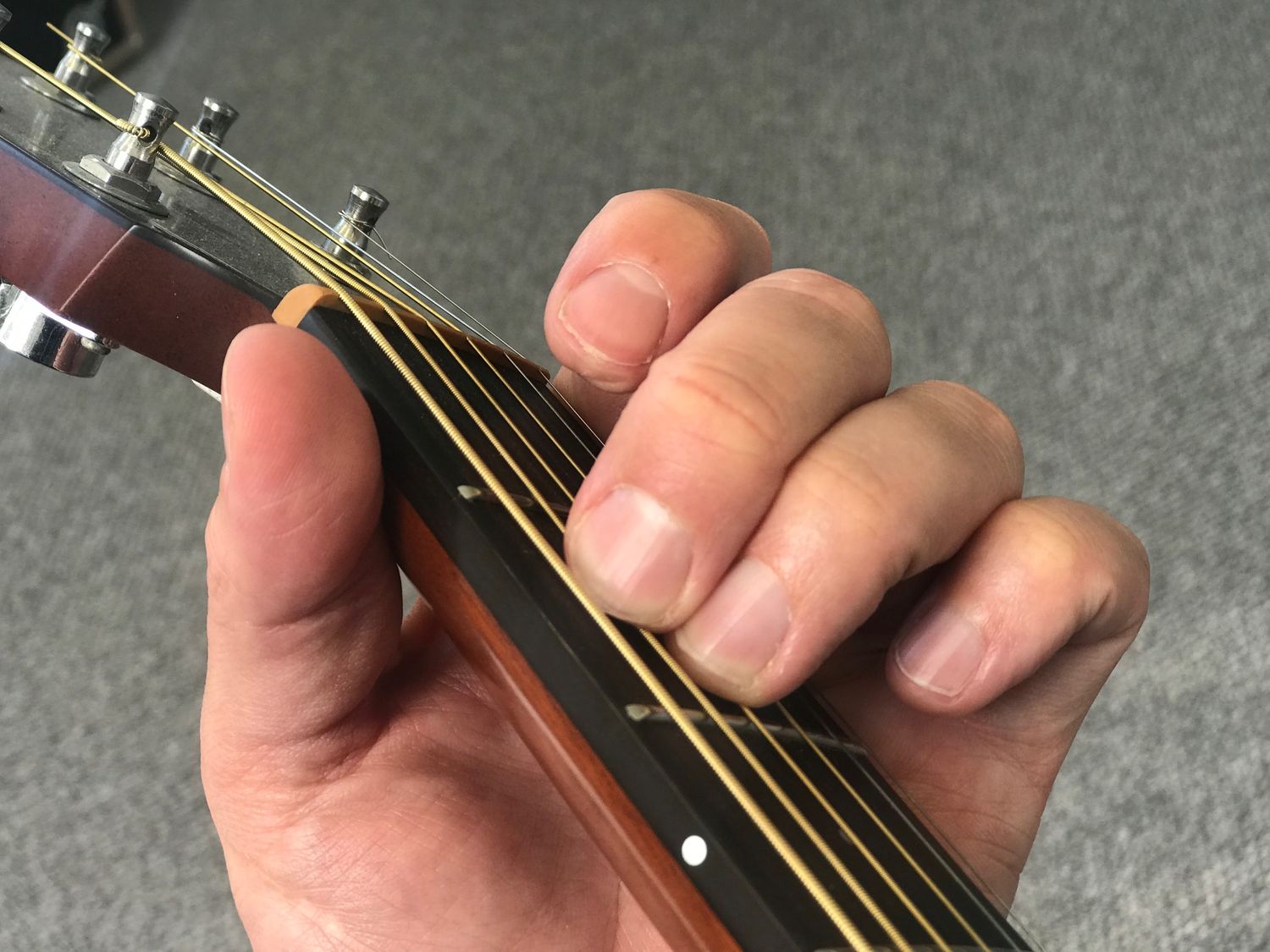Home>Instruments>Guitar>How To Play F Minor On Guitar


Guitar
How To Play F Minor On Guitar
Published: February 13, 2024
Learn how to play the F minor chord on guitar with our easy step-by-step guide. Master the basics of guitar playing and start strumming today!
(Many of the links in this article redirect to a specific reviewed product. Your purchase of these products through affiliate links helps to generate commission for AudioLover.com, at no extra cost. Learn more)
Table of Contents
Introduction
Playing the guitar is a fulfilling journey that opens up a world of musical possibilities. From strumming along to your favorite songs to creating your own melodies, the guitar offers a versatile and expressive outlet for musicians. As you delve into the realm of guitar playing, mastering various chords is essential for expanding your repertoire and honing your skills.
In this guide, we will focus on one specific chord: the F minor chord. Understanding how to play the F minor chord on the guitar is a valuable skill that will enrich your playing and enable you to tackle a wide range of songs across different genres. Whether you're a beginner seeking to add depth to your chord knowledge or an intermediate player aiming to refine your technique, mastering the F minor chord will undoubtedly enhance your musical journey.
Throughout this article, we will explore the fundamentals of the F minor chord, including its structure, fingering, and practical tips for effective practice. By the end of this guide, you will have a comprehensive understanding of the F minor chord and the confidence to incorporate it into your playing seamlessly.
Join me as we embark on a journey to unravel the intricacies of the F minor chord, empowering you to infuse your guitar playing with depth, emotion, and versatility. Let's dive into the world of the F minor chord and unlock its potential to elevate your musical expression.
Understanding the F Minor Chord
Before delving into the specifics of fingering and playing the F minor chord, it’s crucial to grasp the theoretical foundation behind this essential chord. The F minor chord is comprised of three essential notes: F, Ab, and C. These notes form the building blocks of the chord, creating its distinct tonality and emotional resonance.
The F minor chord belongs to the category of minor chords, characterized by their melancholic and introspective sound. When strummed or plucked, the F minor chord evokes a sense of depth and emotion, making it a powerful tool for conveying poignant musical expressions.
Understanding the structure of the F minor chord also involves recognizing its chord formula. In the case of the F minor chord, the formula consists of the root note (F), a minor third (Ab), and a perfect fifth (C). This formulaic approach provides insight into the intervals that define the chord, offering a deeper understanding of its harmonic makeup.
Furthermore, the F minor chord can be visualized on the guitar fretboard, allowing players to familiarize themselves with its position and shape. By identifying the frets and strings that constitute the F minor chord, aspiring guitarists can internalize its layout and seamlessly transition between chords during playing.
Embracing the essence of the F minor chord entails recognizing its role in various musical contexts. Whether it’s employed in soulful ballads, moody rock compositions, or introspective acoustic arrangements, the F minor chord adds a layer of emotional richness to the music, capturing the listener’s attention and stirring the soul.
As we unravel the intricacies of the F minor chord, we pave the way for a deeper connection with the instrument and a heightened ability to convey complex emotions through our music. With a solid understanding of the F minor chord’s composition and significance, we are poised to explore the practical aspects of playing this evocative chord on the guitar.
Fingering the F Minor Chord
Now that we’ve delved into the theoretical underpinnings of the F minor chord, let’s transition to the practical aspect of fingering this essential chord on the guitar. Mastering the fingering technique is pivotal for producing a clear and resonant F minor chord, ensuring that each note rings out harmoniously when strummed or plucked.
To form the F minor chord, we will utilize a common fingering approach that optimizes playability and sound quality. Follow these steps to effectively finger the F minor chord:
- Positioning: Begin by positioning your index finger across the first fret of the low E string, effectively fretting the F note. This serves as the root note of the F minor chord.
- Middle Finger Placement: Next, place your middle finger on the second fret of the G string, fretting the Ab note. This note constitutes the minor third of the F minor chord.
- Ring Finger Placement: Finally, position your ring finger on the third fret of the D string, fretting the C note, which serves as the perfect fifth in the F minor chord.
With your fingers in the designated positions, strum the strings gently to produce the resonant sound of the F minor chord. Ensure that each finger maintains proper pressure on the frets to prevent any muffled or muted notes, allowing the chord to ring out clearly and melodically.
It’s important to maintain a relaxed and natural hand posture while fingering the F minor chord, as excessive tension can hinder dexterity and produce a strained sound. Take a moment to adjust your finger placement and hand positioning to achieve optimal comfort and control, fostering a seamless transition between chords during your playing sessions.
As you familiarize yourself with the fingering technique, remember to listen attentively to the sound produced by each string within the F minor chord. Paying close attention to the clarity and resonance of the individual notes will refine your ability to execute the chord with precision and musicality.
By mastering the art of fingering the F minor chord, you equip yourself with a foundational skill that transcends this specific chord, empowering you to approach other chords with confidence and proficiency. As we continue our exploration, we will delve into effective practice tips to solidify your command over the F minor chord and enhance your overall guitar playing prowess.
Practice Tips
Developing proficiency in playing the F minor chord, like any aspect of guitar mastery, requires consistent and focused practice. By incorporating the following practice tips into your routine, you can strengthen your command of the F minor chord and elevate your overall playing abilities:
- Isolated Finger Exercises: Dedicate time to isolated finger exercises that target the specific finger placements required for the F minor chord. Practice fretting individual notes within the chord shape, focusing on precision and clarity. This targeted approach enhances finger dexterity and strengthens muscle memory, facilitating smoother chord transitions.
- Chord Progression Integration: Integrate the F minor chord into various chord progressions to acclimate your fingers to its placement within a musical context. Experiment with transitioning from the F minor chord to other chords, fostering fluency and agility in your playing.
- Rhythmic Strumming Patterns: Explore diverse rhythmic strumming patterns while playing the F minor chord to cultivate a dynamic and expressive sound. Experiment with variations in strumming intensity and patterns, infusing your chord progression with rhythmic vitality and nuance.
- Application in Songs: Select songs that feature the F minor chord and incorporate them into your practice repertoire. By contextualizing the chord within actual musical pieces, you enhance your ability to apply the F minor chord creatively and musically.
- Ear Training: Engage in ear training exercises to develop a keen ear for identifying the F minor chord within songs and compositions. This heightened awareness enhances your musical intuition and empowers you to recognize and reproduce the F minor chord effortlessly.
Consistency and patience are foundational to effective practice. Embrace a regular practice schedule that accommodates focused sessions dedicated to refining your execution of the F minor chord. By nurturing a disciplined approach to practice, you lay the groundwork for steady progress and tangible improvement.
Moreover, leverage technological resources such as metronomes and guitar tuner apps to maintain precision in timing and tuning while practicing the F minor chord. These tools bolster your sense of rhythm and pitch accuracy, refining your overall performance on the guitar.
Lastly, approach your practice sessions with a spirit of creativity and curiosity, allowing yourself to explore the nuances of the F minor chord with an open mind. Embrace the journey of mastering this foundational chord, celebrating each milestone along the way.
By integrating these practice tips into your daily routine, you cultivate a holistic and effective approach to mastering the F minor chord, enriching your musical journey and fostering a deeper connection with the guitar.
Conclusion
Congratulations on embarking on a journey to unravel the nuances of the F minor chord on the guitar. Throughout this exploration, we’ve delved into the theoretical underpinnings, practical fingering techniques, and effective practice strategies essential for mastering this foundational chord.
By understanding the composition and significance of the F minor chord, you’ve gained valuable insight into its emotive power and harmonic richness. The F minor chord’s melancholic allure and expressive depth make it a versatile tool for infusing your musical creations with poignant emotion and captivating resonance.
As you’ve familiarized yourself with the precise finger placements and sound production of the F minor chord, you’ve honed your technical proficiency and cultivated a discerning ear for musical nuances. These foundational skills extend beyond the realm of the F minor chord, empowering you to approach diverse musical compositions with confidence and artistry.
Remember that mastery is a journey, and consistent, focused practice is the key to unlocking your full potential as a guitarist. Embrace the process of refinement and growth, celebrating each stride forward in your musical development.
As you continue to explore the vast landscape of guitar playing, may the F minor chord serve as a steadfast companion, enriching your musical repertoire and inspiring your creative endeavors. Whether you’re strumming soulful ballads, crafting introspective melodies, or exploring diverse genres, the F minor chord stands as a testament to the emotional depth and expressive range of the guitar.
With a solid foundation in the F minor chord, you are poised to embark on a musical journey filled with creativity, passion, and boundless potential. Let the evocative resonance of the F minor chord fuel your artistic expression and infuse your music with depth and emotion.
As you integrate the F minor chord into your playing, may its haunting beauty and poignant allure resonate with your soul, elevating your musical odyssey to new heights.
Embrace the F minor chord as a gateway to boundless musical expression, and let its captivating essence inspire your musical narrative.











